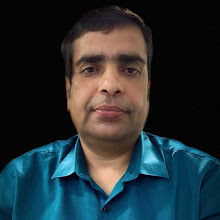In what is called the Internet of Things (IoT),
sensors and actuators embedded in physical objects — from containers to
pacemakers — are linked through both wired and wireless networks to the
Internet. When objects in the IoT can sense the environment, interpret
the data, and communicate with each other, they become tools for
understanding complexity and for responding to events and irregularities
swiftly. The IoT is therefore seen by many as the ultimate solution for
getting fine grained insights into business processes — in the
real-world and in real-time. Started one decade ago as a wild academic
idea, this interlinking of the physical world and cyberspace foreshadows
an exciting endeavour that is highly relevant to researchers,
corporations, and individuals.
IoT Challenges
The IoT connects a vast number of
heterogeneous smart objects that cooperate to support manifold
applications. This requires efficient use of scarce resources in order
to adapt to a dynamically changing environment. Users, applications, and
devices compete for resources such as processing time, memory,
communication bandwidth, and sensors/actuators. Access among them will
need to be constantly and dynamically negotiated.
Supporting IoT architectures, protocols,
and technologies should be open, distributed and scalable, and integrate
heterogeneous devices ranging from tiny sensors and actuators to mobile
devices and large computers. Standardized infrastructures capable of
managing, sharing, and processing these captured data will be necessary
in order to bring the IoT into commercial use.
The IoT2012 conference will focus on these core research challenges.
IoT 2012
The IoT conference series has become the
major biennial event that brings internationally leading researchers and
practitioners from both academia and industry together to facilitate
the sharing of applications, research results, and knowledge. Building
on the success of the last two conferences (2008 in Zurich and 2010 in
Tokyo), the 3rd International Conference on the Internet of
Things (IoT2012) will include a highly selective dual-track program for
technical papers, accompanied by reports on business projects from
seasoned practitioners, poster sessions summarizing late-breaking
results, and hands-on demos of current technology. We
invite submissions of original and unpublished work covering areas
related to the IoT, in one or more of the following three categories:
technical papers, posters, and demonstrations.
IoT Topics of Interest
IoT 2012 welcomes submissions on the following topics:
* IoT architectures and system design
* IoT networking and communication
* Circuit and system design for smart objects in the IoT
* Novel IoT services and applications for society/corporations/individuals
* Emerging IoT business models and corresponding process changes
* Cooperative data processing for IoT
* Social impacts such as security, privacy, and trust in the IoT
Work addressing real-world implementation and deployment issues is encouraged.
Submission
The conference solicits original and
previously unpublished research and industrial papers. Submissions
should be prepared in the IEEE conference proceedings format (up to 8
pages), and uploaded in PDF format via EDAS. Authors of accepted papers must guarantee that their papers will be presented at the conference. The
conference is technical co-sponsored by IEEE CRFID and IEEE SSCS
Shanghai Chapter. Accepted conference papers will be submitted
for publication in IEEE Xplore and indexing by EI Compendex.















